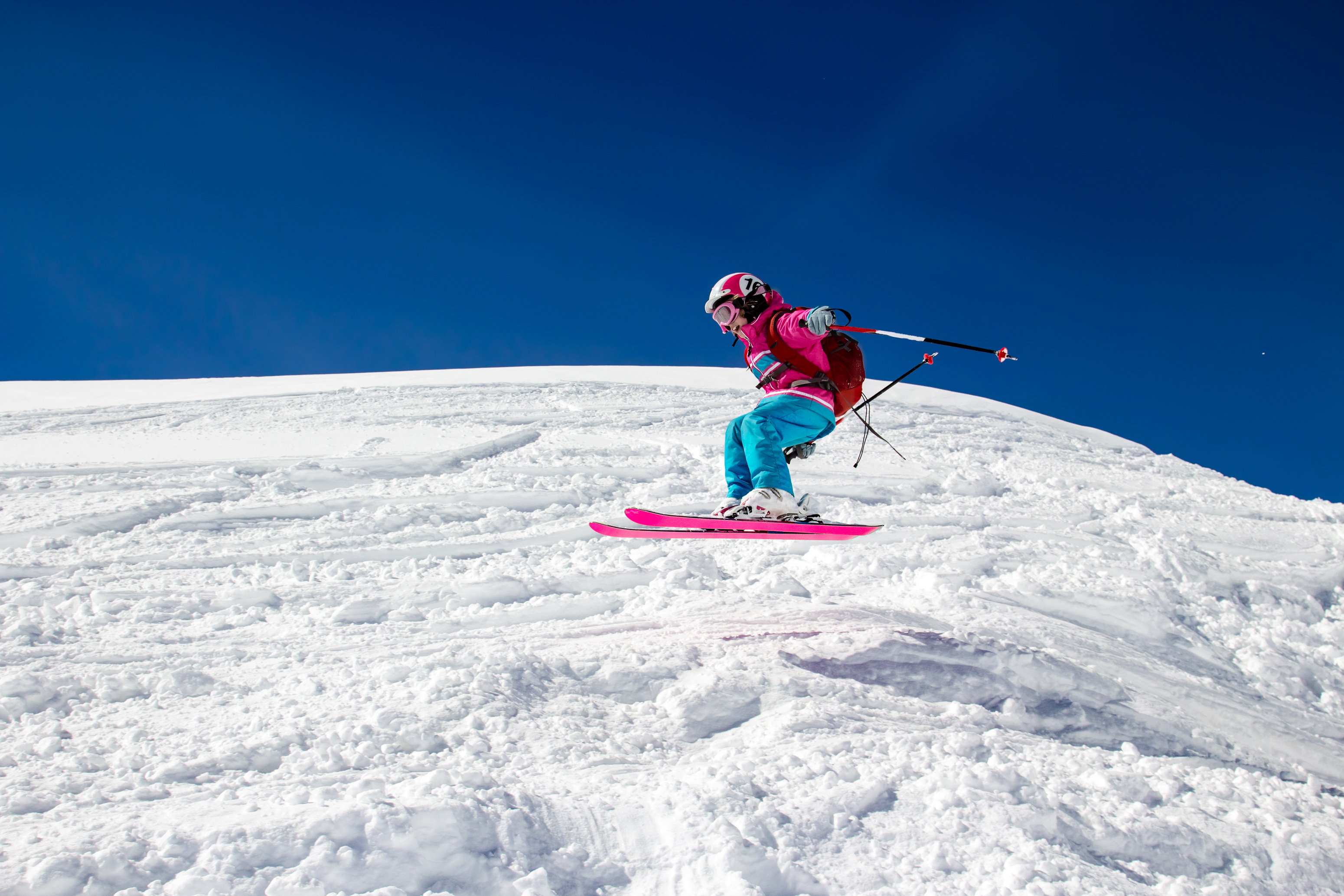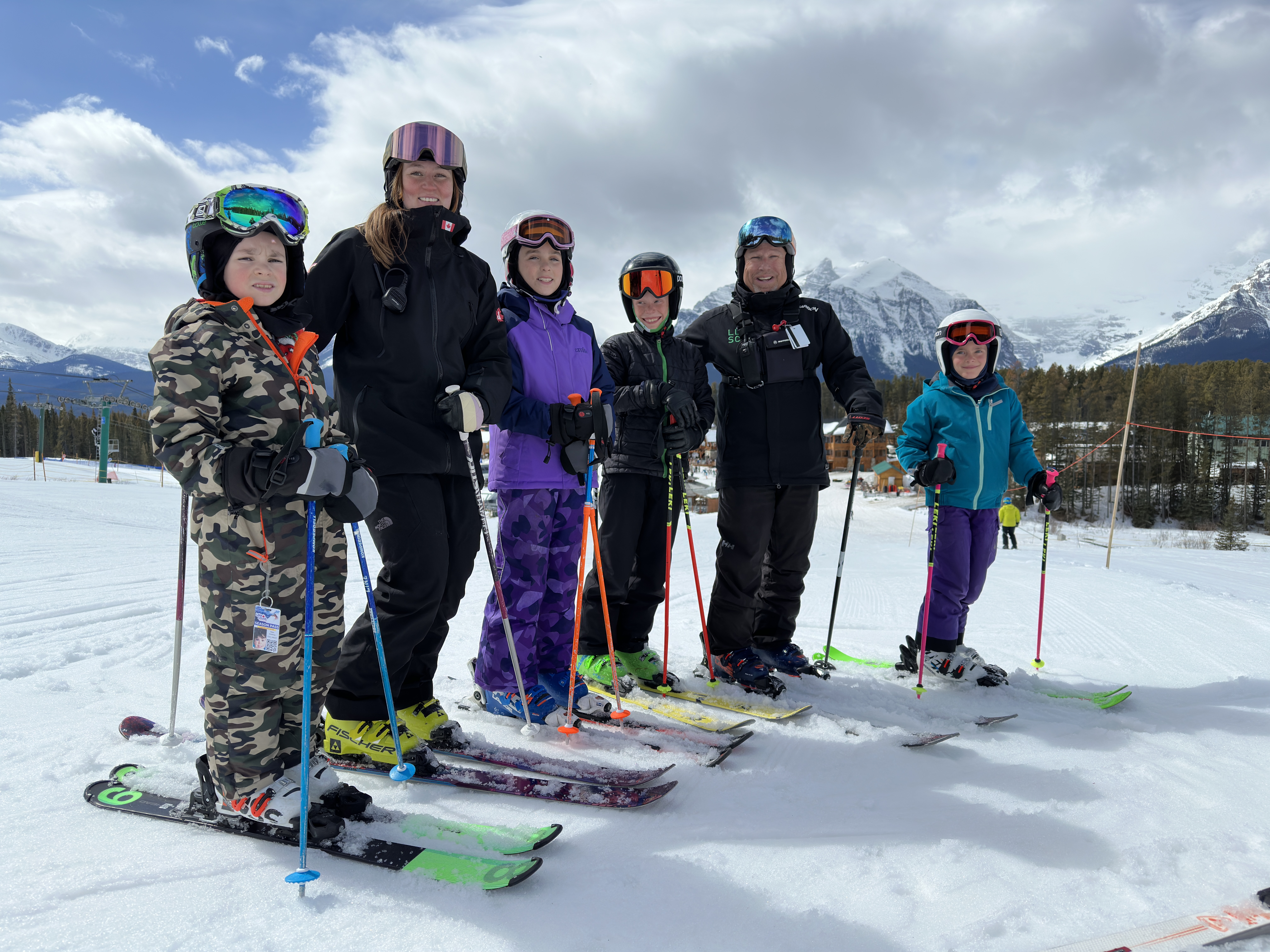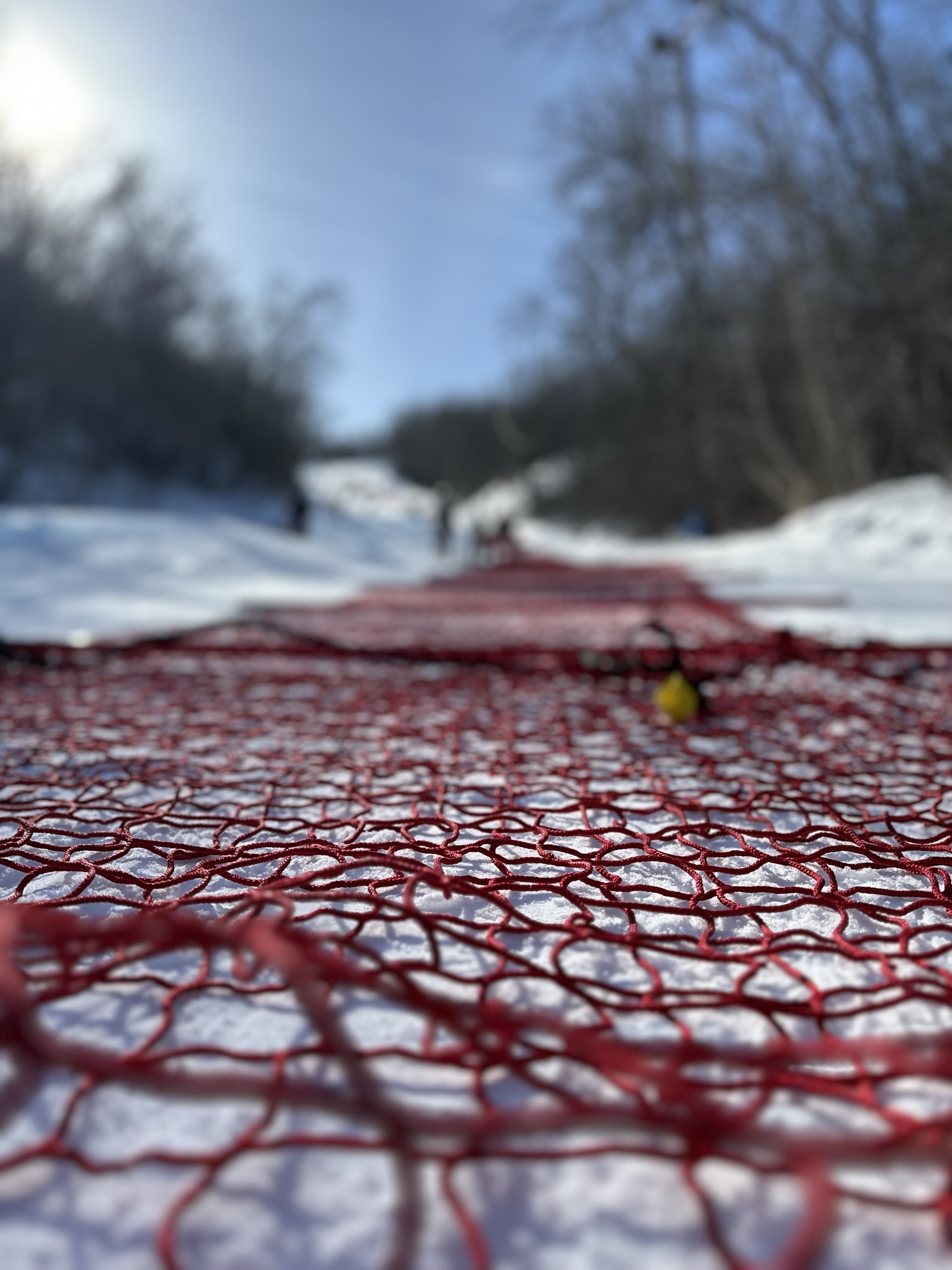Skier Essentials
FORM THE FOUNDATION
In the Skier Essentials stage, skiers continue to develop fundamental movement and skiing skills in fun, structured and unstructured environments. Providing fun, inclusive and developmentally appropriate physical activity experiences will promote the development of a child's confidence and desire to ski.

KEY CONCEPTS
In this stage, skiers are learning fundamental movement skills in a variety of environments off the snow. On snow, skiers focus on learning the fundamental skiing skills needed to become a skier for life. Skiers are still in the discovery stage while they continue to develop overall movement competency on snow by skiing around obstacles in a variety of terrain types, including small features in the terrain park. Skiing should be a playful activity for every child at this stage.
The goal is to maximize the number of days and time on skis while fostering the love of skiing.
Providing positive feedback and ongoing encouragement as often as possible will increase the experience for every child.
- Children should be physically active every day. Several short bursts of activity are better than one long training session.
- Children should take part in a wide range of complementary sporting activities to develop their agility, balance and coordination skills. Mountain biking, gymnastics, soccer and skating are great examples of some complementary sports.
- Participate in complementary sports that develop running, jumping, throwing, catching, kicking and swimming skills to build overall athleticism.
- Ask the sport programs to use trained or certified coaches to ensure proper development of the fundamental movement and technical skiing skills. Children benefit when they are taught how to perform the fundamental skills correctly.
- Talk to your children about the importance of having fun and enjoying participation. Focusing on results and sport specialization hinders future sport performance.
- Be a positive role model and provide the appropriate behaviour modelling to your children.
- Show respect to coaches, officials, and volunteers while demonstrating good sportsmanship, respect and integrity. Developing your child's athletic character begins at an early age.
- Pay attention to the equipment used to improve physical strength. Children in the Skier Essentials stage should use medicine balls, Swiss balls, and their body weight. Heavyweights and weight machines should be avoided.
- Unstructured play is highly encouraged.
LTAD PARENT TIPS
|
General |
Review the Long-term Athlete Development Information for Parents Resource from the Coaching Association of Canada. Review the physical literacy assessment tools to ensure proper development of athleticism. |
|---|---|
|
Coaching |
Hire only trained or certified coaches and instructors who follow the ACA LTAD guidelines. |
|
Equipment |
Ensure all equipment is properly fitting, skis are tuned and waxed, boots are the proper size and warm clothing is provided to ensure the best opportunity for success. Click on the equipment tab for more details. |
|
Family |
Alpine skiing is a true family sport that embraces the whole family, not just the athlete. Many friendships that last a lifetime are built at the ski hill through ski club functions and getting involved in the local club events. |
|
Building Athletic Character |
Provide positive feedback on basic athletic character traits including the importance of having fun, skiing as often and for as long as possible each day, supporting teammates, communicating and thanking the coach. Remember children will model the behaviour expressed by their role models and parents. |
|
Training and Competition |
Time on snow is a precious commodity during the winter months. Children should aim to complete more than the minimum number of suggested days on snow because time and mileage on snow in the early years is more difficult to replace in the later stages of development. Children should aim to ski as often as possible when the ski areas are open. Aiming for 40+ days per year or skiing two to three times per week is optimal for developing proficiency in the fundamental skiing skills. The number of competition starts ranges from 4 to 8 starts per season. Competitions should be fun, skill-based, and in a sprint format where young skiers can take as many runs as possible. Events can include Giant Slalom, Slalom, Dual/team events, Kombi races, Obstacle courses, Mogul and Freeski competitions, and skill events. |
|
Physical Literacy |
Encourage children to participate in a variety of sports when they are not skiing to develop their fundamental movement skills and improve their ability, balance and coordination. |
|
Choosing a Club |
One of the most important decisions you will make during the early stages of your child's' development will be determining which club to join. Use the information in the next section to assist in choosing your ski club. |
|
Health and Wellness |
Ensure young children are maintaining their health and wellness with respect to sleep, nutrition, hydration, time on task, etc.. Maintain a good balance between sport, family, education and social activities. The time spent travelling to/from the ski hill and at the ski hill can be long. Consider bringing snacks, water, etc. to ensure your child is properly fueled. |
CHOOSING A CLUB
Choosing a club that fits your family is one of the most critical decisions. Here are some sample questions to use when researching the best organization for you and your skier.
- Are the coaches certified in the National Coaching Certification Program?
- What coaching experience do they have and at what levels?
- Do they have healthy short and long-term goals?
- Has the club taken the Responsible Coaching Movement pledge?
- Do they have secure 'Safe in Sports Policies'?
- Do they follow the ACA LTAD guidelines?
- What is the overall reputation of the club for providing a quality sports environment for skiers at the Skier Essentials stage?
- Does the program emphasize the proper development of fundamental movement and skiing skills?
- Do they work with complementary sports clubs to promote the development of physical literacy? Is there an increased cost for this service?
- Do they participate in annual fitness testing?
- What is the club reputation amongst parents of current skiers?
- How many days on snow (volume) is available to your skier and is it consistent with the ACA LTAD recommendations for the Skier Essentials stage?
- What is the cost? Volunteer expectations?
- What is the driving time to the hill (proximity)?
- Is there an equipment pool available? Do they host an annual ski swap where lightly used equipment can be purchased?
- Do they host a pre-season equipment purchase event with knowledgable coaches and technicians present to help with proper equipment selection?
- Are they committed to creating efficiencies for the parents and skiers?
EQUIPMENT
The proper equipment set up and fit can help provide the young skier with a positive sporting experience that provides the skier an increased chance of success in developing their fundamental skiing skills. Poorly fitting, improperly adjusted or un-tuned equipment can prevent a skier from successfully developing their fundamental skiing skills.
During this stage, skiers will begin more formalized ski race training in a variety of events that requires ski racing specific gear.
For more information on equipment selection, please review the following webisode aimed at selecting and fitting equipment for the U10 to U14 ski racer and work in partnership with your local club coach to ensure the ski racer has the best equipment set up to promote proper skill development and execution.
Alpine Canada Partners and Equipment Pool Suppliers
To review equipment requirements for the Skier Essentials stage, please visit the Skier Essentials Equipment page.
MAINTAINING BALANCE
Raising active children in today's busy world can be challenging. Family time and being engaged with your children at this stage assists with creating the habit to be physically active for life.
Maintaining a balanced family life that fosters the development of healthy habits includes:
- Scheduling family time and activities where the family can be active together. Skiing is a great family activity.
- Ensure that everyone in the family has time for rest and regeneration.
- Find a balance between school, sports, and encourage multisport exposure.
- Allow for social "play" time with other children in a supervised but unstructured environment like the park playground.
- When children begin to participate in a more structured sports program, parents should become involved through volunteer activities at their child's local club.
REFERENCES:
ACA LTAD Skier Essentials Key Concepts
ACA LTAD Skier Essentials Webinar
Sport for Life - Long Term Development in Sport & Physical Activity 3.0. Higgs, Colin & Way, Richard & Harber, Vicki, Jurbala, Paul, Bayli, Istvan. (2019). Long-Term Development in Sport and Physical Activity 3.0. Canadian Sport for Life. ISBN: 978-1-927921-62-3.
ACA LTAD Training and Competition Focus Matrix
ACA LTAD Training and Competition Volume Matrix


.jpg)


